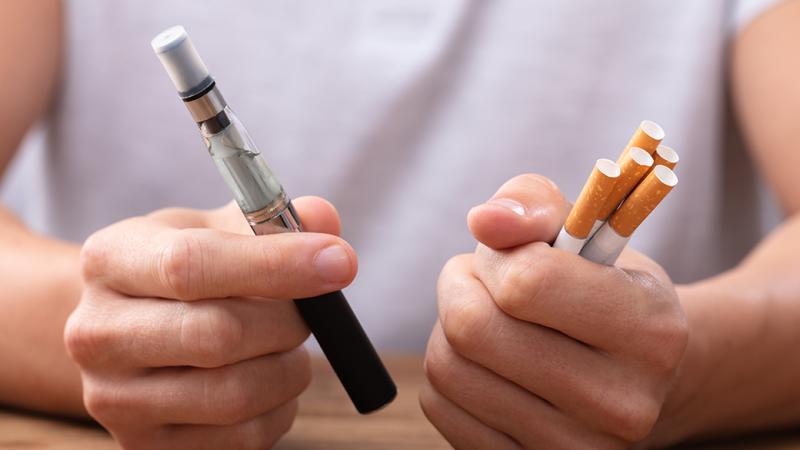The Role of Schools in Preventing Vaping and Tobacco Use Among Teens

As teens deal with the difficulties of growing up, they are under a lot of pressure, and sadly, a lot of them give in to the urge to smoke or vape. The growing popularity of e-cigarettes and tobacco products among teens has raised concerns about long-term health implications, making it crucial for schools to take proactive measures in prevention. Schools play a vital role in curbing the use of tobacco and vaping products among teenagers, promoting healthier choices, and educating students about the dangers of vaping and smoking.
The Growing Threat of Vaping
Vaping has become a worrying trend among teens. E-cigarettes are often sold as a "safer" option to smoking, which has led a lot of teens to think they are safe. Studies have shown that e-cigarettes contain nicotine, dangerous chemicals, and sometimes even toxic metals. This makes the risks of vaping more clear. These things can hurt the lungs, heart, and other body parts, which can cause short-term and long-term health problems. Vaping can also lead to smoking regular cigarettes, which makes the problem of nicotine addiction among teens and young adults even worse.
Schools as a Primary Line of Defense
Schools have the unique ability to directly influence the habits and decisions of young people. With most adolescents spending a significant amount of time in educational environments, schools are the ideal place to implement preventive measures. By providing students with information, support, and positive role models, schools can help deter the use of tobacco and vaping products.
Comprehensive Education Programs
One of the most effective ways schools can prevent vaping and tobacco use is through comprehensive education programs. These programs should focus on educating students about the dangers of vaping and the long-term health risks associated with smoking. Schools can incorporate these lessons into health education classes or as part of broader wellness initiatives. It can help students make better health choices if they know about the bad effects of nicotine addiction, like how it hurts the lungs and raises the risk of heart disease.
The curriculum should also highlight the addictive nature of nicotine and how it can take a serious toll on the developing teenage brain. By providing clear and factual information about the dangers of vaping, students are less likely to view these products as harmless or trendy.
Peer Influence and Role Models
In addition to formal education, schools can foster a culture of healthy living by promoting peer-led initiatives. Peer influence is a powerful tool, and when students hear from their classmates about the negative effects of vaping or smoking, they are more likely to internalize these messages. Schools can create programs where students act as anti-smoking and anti-vaping ambassadors, sharing their knowledge and experiences with their peers.
Teachers and school staff also serve as critical role models. When educators consistently reinforce the importance of living a tobacco-free life, they set a positive example for students. Schools can encourage staff members to engage in conversations with students about the dangers of vaping and tobacco, providing a consistent message of support for those who wish to quit or avoid starting.
Policy and Enforcement
While education is key, schools also need to adopt clear and enforceable policies to deter vaping and tobacco use. Many schools have implemented tobacco-free campus policies, which prohibit the use of cigarettes, e-cigarettes, and other tobacco products on school grounds. These policies not only help maintain a healthy environment for students but also send a strong message that vaping and smoking are not acceptable behaviors.
Schools should also provide support for students who are already using these products. Offering counseling, cessation programs, or referrals to health professionals can assist teens in quitting. These resources help students who may be struggling with nicotine addiction and need guidance on how to break free from their dependence.
Collaboration with Parents and Communities
Preventing vaping and tobacco use among teens is not solely the responsibility of schools; it requires collaboration between schools, parents, and the community. Parents can reinforce what students are learning at school by discussing the dangers of vaping at home and setting a good example themselves. Communities can support schools by providing resources and information about cessation programs and mental health services.
Conclusion
The dangers of vaping and smoking cannot be overstated, and schools are a crucial first line of defense in protecting teens from these harmful behaviors. By implementing education programs, enforcing clear policies, promoting positive role models, and fostering community support, schools can significantly reduce the prevalence of vaping and tobacco use among young people. A tobacco-free future for the next generation is possible with the right combination of education, prevention, and support. Schools have the power to make a lasting impact on the health of their students, setting them on the path to a healthier, smoke-free life.
Post Your Ad Here

Comments